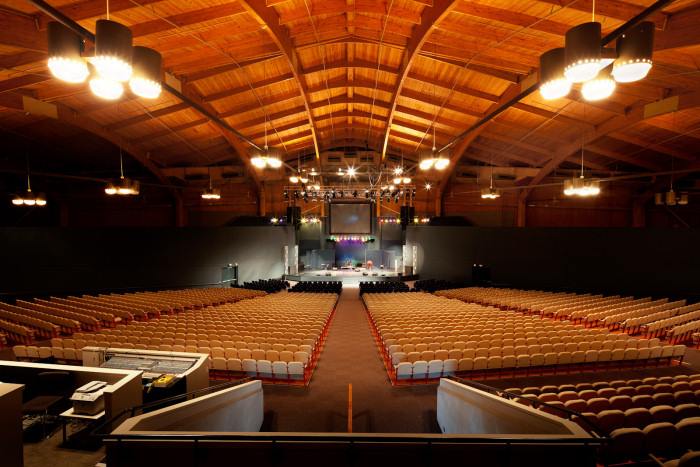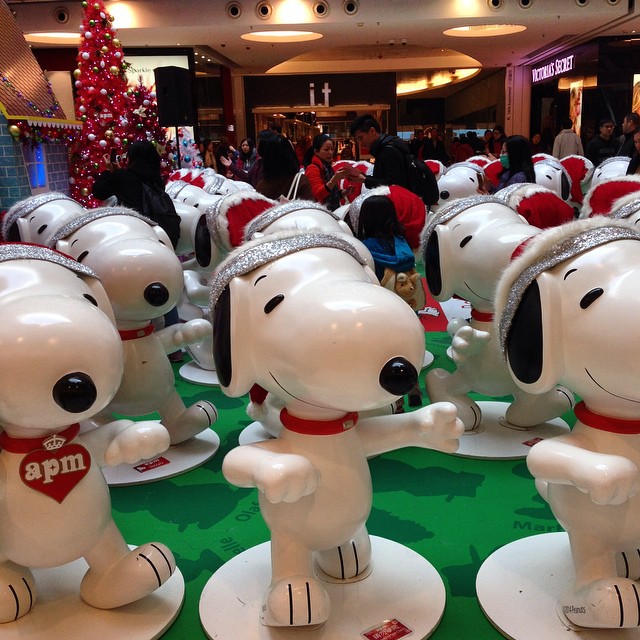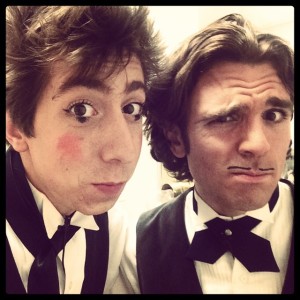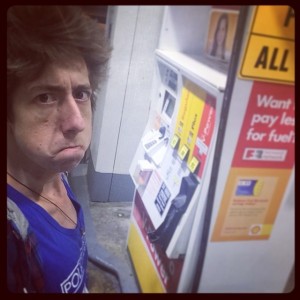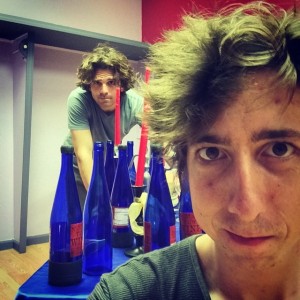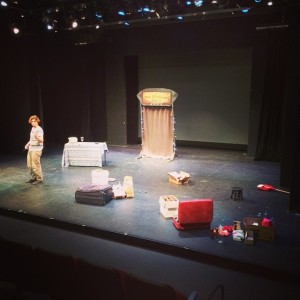Posts
Two Months at Sea
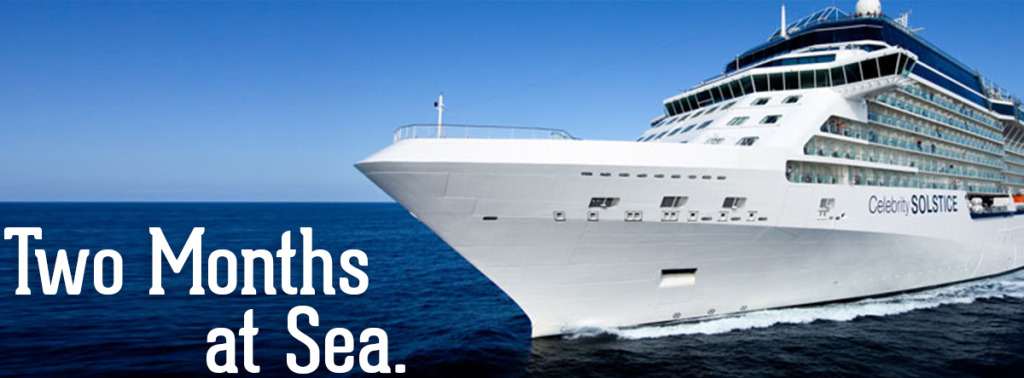
This July and August, I performed on board the Celebrity Solstice on the seas between Seattle and Skagway. Most performers work on ships for a week or two at a time – it was a unique experience, tasting life at sea for two full months.
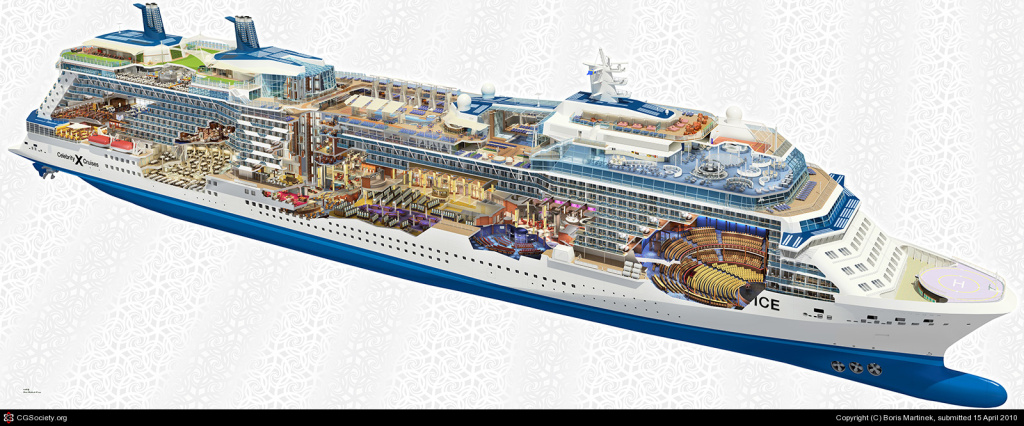
The Solstice, in cutaway view. Copyright Boris Martinek. Via – http://forums.cgsociety.org/archive/index.php?t-872985.html
The Solstice is the largest ship in Celebrity’s fleet – it’s staffed with 1,200 crew members who serve some 3,000 passengers every week. …But what makes the Solstice so special? It’s got a number of amenities that are unique to the ship, including::
– A glass blowing studio (The world’s only all-electric setup, apparently.)
– A two-story tall wine rack that holds some 2,800 bottles of wine (According to the HR team, this is one of the best examples of “modern luxury” on the ship.)
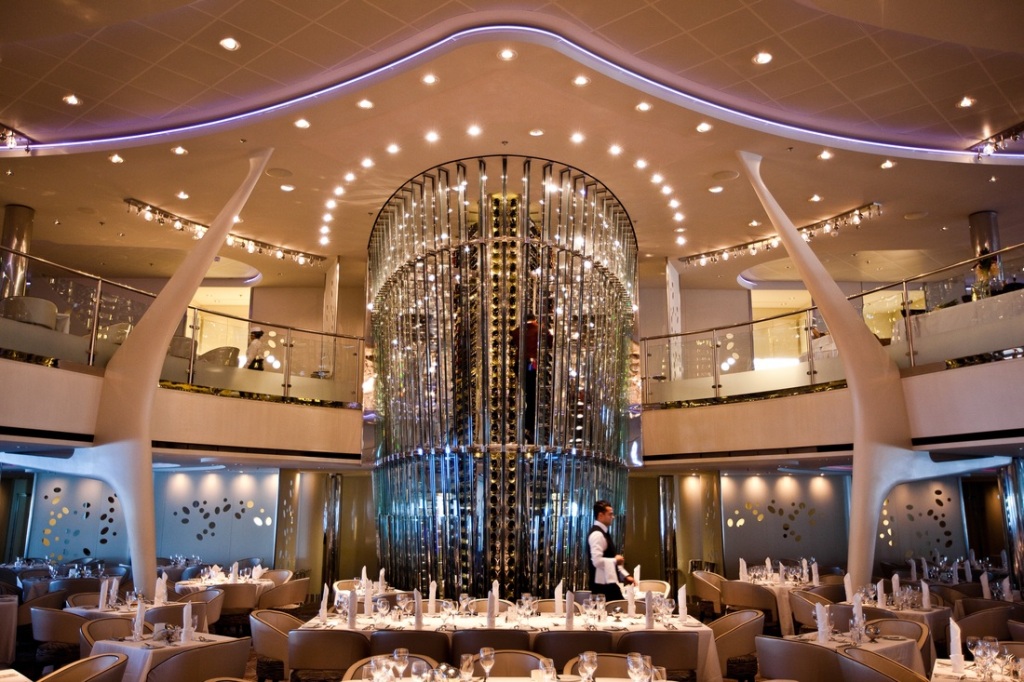
3,000 bottles, 3,000 guests. How many bottles of wine are down below decks?. Via – http://copcruise2013.weebly.com/uploads/1/0/1/5/10155164/3072560_orig.jpg
– A lawn (?!) on the upper deck (Really. Lush, live grass growing on deck 15. Bocce tournaments all week for the guests!)

A groundskeeper mows the ship’s lawn. Yes, this is real life. Via – http://www.dlphotography.com.au/top-selection/
– An Apple store (Apparently this is a big deal when the ship sails around Europe. In the US, folks aren’t quite as impressed.)
– A 12-deck-tall atrium in the center of the ship, complete with a living tree suspended in mid-air.
There’s a lot more to the ship than that, but I’ll let you look that up on your own. If you want to see more about the Solstice, check out Celebrity’s website.
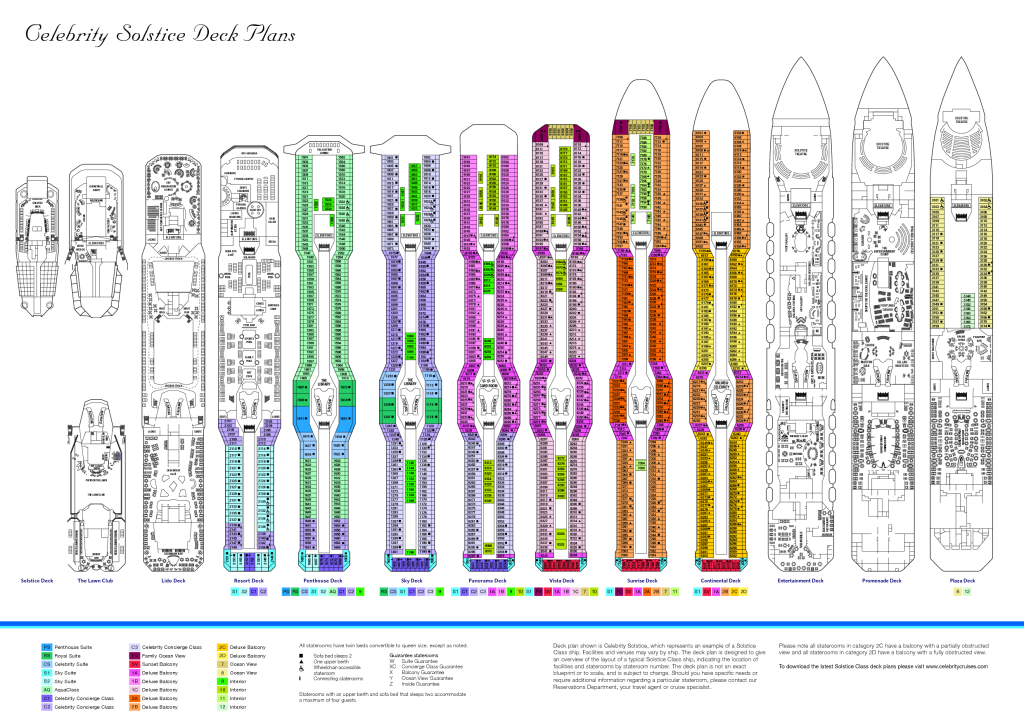
Public deck plans for the Solstice. You’ll notice that nothing below deck 3 is published here – below that is crew only! – Via: http://www.docstoc.com/docs/73394071/Celebrity-Solstice-Deck-Plans
It’s pretty amazing, when you about the ship’s scale – it’s bigger than most luxury hotels you’d find in the US – and it floats on the open ocean… With enough provisions to sustain itself for a week straight. The Solstice has a sailing capacity of 4,000+ including crew, which makes it over half as populous as the town where I live in Vermont. Unique situations make for unique solutions – with 4,000 breakfasts to make every day, the Solstice needs an entire room on deck 2 to store eggs (according to the galley tour guide, 240 dozen eggs are consumed on the ship every day.) The forward half of deck 2 also houses the meat lockers, a few prep kitchens, freezers, fridges, and the like. It’s no trivial thing – over 170,000 meals are prepared each cruise for the guests alone, and all of that food has to be loaded on each week in Seattle.
Having such a large number of people in one space calls for unique health and safety measures, too — and it all starts before you get on board. The first thing you do when you’re offered a contract is go get an extensive physical. The clinic checks your blood for illegal substances, vaccination titers, cholesterol levels, and other potentially disqualifying things – they take a lot of blood, so prepare to get light-headed. They also take an EKG, x-ray your chest for tuberculosis, check your vision, and test your ranges of motion. A urine test backs up the results of the blood drug test, and also serves as a test for diabetes. The battery of tests takes about four hours, and you get results a few weeks after you go in. While you’re waiting for those tests to come back, you submit paperwork for background checks, send in your costume measurements, study videos of the show, and sign documents in triplicate.
All of this is doublechecked when you first sign on to the ship, before you set sail. It’s a good thing, though – they take health seriously! Contagious diseases spread like wildfire on a ship. There’s evidence of this concern all over the ship – from fistbumps instead of handshakes, to wash-your-hands videos played in passenger assembly drills, to Purell dispensers at every turn.
You’re also not just an entertainer – you’re crew. Beyond the weekly lifeboat drills and emergency trainings, your first two weeks on board will be filled with crew training sessions. You’re given a written test about the ship’s safety procedures every contract, and if you don’t pass, you’re obliged to further training.
But- on with the show! The Solstice Theater can seat around 1,200 people, but routinely holds more in the standing-room and handicapped areas. It’s a gorgeous space with a luscious red curtain, little stage elevators reminiscent of Radio City Music Hall, and an enormous upper balcony (not pictured here.)
I was hired as the special “Guest Entertainer” for the production shows on the ship. A week at sea means a week of nightly entertainment for the guests. Besides fly-on singers, comedians, and other acts that come for a week or two at a time, the ships also have a live-on repertory cast for three production stage shows. This cast is composed of singers, dancers, and circus performers who are featured in each show. On the Solstice, we performed Ghostlight (a Broadway-style revue show that highlighted the dancers,) Pulse (a 90s and 00s rock-and-roll show where the dancers were really featured,) and Solstice: The Show (a cirque-noveau show where the circus performers were the main attraction.) Just like any production show, even if you’re doing a full number in the show, you’ll still have cues when you’re not in the spotlight.
The Solstice show had it all – a world-class hula hooper, an outstanding handbalancer, silks, adagio, and more. I performed my mouthstick and ball juggling numbers. The ball juggling was interesting in that I was assigned backup dancers. That’s right — backup dancers. A group of four classically trained dancers from all over the world, adding some flavor to my juggling. Can’t make that up.
The mouthstick number was a shorter, tighter version of what I presented at the Riga International Circus festival in Latvia. All the big images, but condensed into three minutes. What a reblock that was! Balancing a sword on a knife point is tricky on a moving ship, I’ll tell you what.
The rocking of the ship makes everything harder. My first week on board, I made a point of training and rehearsing an average of six hours a day. This was in one part to get back “in my body” and ready to perform a technical ball juggling act several times a week (the numbers I presented in Solstice were more acrobatic and technically difficult than my numbers in The Dinner and a Show Show. Benjamin and I had finished our run in Orlando just before hopping on the ship.) This schedule helped knock the rust off of the routines, but also gave me plenty of time to feel out the motion of the ship and get accustomed. You can only get so accustomed to the ocean, though – there were some tech rehearsals where I almost fell over during my glass balancing number because the seas were so choppy!
It’s all a matter of timing – will the ship be in an exposed area when your show is going on? We performed Ghostlight and Solstice on the rockiest days, when the ship was at sea. I would train late at night on the first day of the cruise when we left Seattle, but always had to stop around 1:30am, when the ship left the Inside Passage. We we left the protection of Vancouver Island, the ship would rock so wildly that it was impossible to stay focused.
One of the realities of working on a ship is the difficulty of finding practice space, as well as practice time. Since there are so many shows going on every day, and so many buyouts on the ship using its facilities for the week (a “buyout” is a special interest group that rents a block of rooms on the ship and uses the theater and convention space as a setting for an annual meeting or other week-long event,) it can be tricky to find a quiet space to rehearse for a few hours.
This picture isn’t totally fair – it was taken backstage the week one of the shows on the ship was loaded out – but it illustrates the point. When you need to practice, you need to practice! When I had access to the stage, though, I made the most of it. Here are a couple of things I worked on this cruise season:
The schedule varies from day to day, but there’s always a tech rehearsal before a show. Internet is expensive and slow on board ($0.79 / minute for passengers, $0.19 / per minute for crew – maximum 15kb/s,) and cellphones don’t work at sea, so the next day’s schedules are given the night before through voicemail. These messages can be long, so you’re wise to scribble them down as you listen to them.
The ship’s cast of circus acts, singers, and dancers came from all over. The show was composed of performers from the Philippines, the Ukraine, England, Australia, South Africa, Colombia, the United States, Russia, and Romania. (Any guesses which one of those countries the other circus acts were from?) When they’re not on a ship contract, they’re training at home… though those times can be few and far between. One of the dancers in our cast was on his tenth year working at sea! It’s not surprising that many cast members are married to one another or are in relationships on board.
The ship, like the cast, represents many countries. Despite the range of nationalities and linguistic heritages, there are rarely communication issues. Celebrity hires mostly non-native speakers of English, but they make sure that everyone on board has a level of English proficiency. As with any standardization like this, though, people fall through the cracks – I’ve heard of employees hired for positions with heavy guest interaction being let go because their language skills weren’t up to par. Guest areas are “English Only Zones” and getting caught speaking anything else around guests can be grounds for dismissal. However, the company encourages employees to respond in the language that guests approach them in if they are proficient, so you’ll often see French guests joking with Hatian room stewards as they walk down the halls. I’ve had the pleasure of many conversations in Spanish and German with guests in restaurants and around the ship, as well.
Employees live on decks 3, 2, and 1. Most employees have double occupancy rooms, and many of those rooms are “flip flops” meaning they are equipped with folding murphy beds. I lived in a single room with a permanent bed, desk, and bathroom – it had enough room to spread out a bit and live in, just no porthole. My neighbors, on the other hand, were a married couple in a giant room – a full bed, two desks, a couch, and coffee table. Oh, to dream.
Down below, there’s a crew bar, the crew mess, administrative offices, training rooms, and more.
Chris, pictured above, was one of the musicians on board. The ship employs a party band, a guitar duo, a guitar soloist, an entire orchestra, DJs, and a bongo accompanist for the disco (Really. He’s amazing.) These folks play all over the ship, in all kinds of settings. In the shows, in the lounges, alongside guest entertainers, and by the pool. When the orchestra backs fly-on singers who perform their own hour-long program on a cruise, they often only have an hour’s tech rehearsal, then sightread the entire show that night. Those guys are true heroes. They have some unique challenges, too – for example, humidity varies from day to day, from port to port. This means that house band members need to have a huge array of reeds for their instruments – something that will work for any climate.
The reward, though, is that we get to see some pretty amazing stuff.
There’s more to the job, of course, but that’s the long and short of performing on a ship! I’m looking forward to doing it again soon.
Leave a comment below if you have questions I didn’t address here!
Two Months with the Rockettes
This March, I was lucky enough to be called by the casting director of Radio City Music Hall’s latest production, the New York Spring Spectacular. They were looking to add some flair to the show, and one of the folks they wanted was a juggler. I fit their needs, so I put some projects on hold and moved to New York the next day. (If you’re reading this and considering relocating to New York City on 24 hour’s notice… just know that it’s a stressful thing to do!)
I’d never been to Radio City Music Hall before, and I was floored when I walked into the showroom.
For those of you who don’t know, Radio City is the largest indoor theater in the world. It was built in 1932 and seats 6,000 people. The stage and bandcar are actually a 10,000 square foot system of three separate elevators that have a range of several stories. The design of Radio City’s hydraulic lifts was quickly coopted for the very first aircraft carriers – that’s how unique and revolutionary the design was when it was first concieved. It was place on the American Society of Mechanical Engineers’ list of historic landmarks in 1971. When the theater was renovated in 1999, a crew of engineers looked at the system of original hydraulics and engineering and decided they were “…so sound, they didn’t have to change a thing.”
The lobby’s interior was designed by Donald Deskey, a guy who had experience designing the interiors of luxury cruise ships. The main lobby (or “Grand Foyer,” as their PR team calls it) is 60 feet tall and covered in gold-leafed wallpaper. Other parts of the building are lined with marble or covered in murals (including, apparently, an unfinished work by Georgia O’Keefe.)
Despite its opulance, it was slated to be demolished in 1978 due to dwindling audiences. A group of preservationists in New York saved it from becoming a parking lot (really!) Later that year, the theater’s lobby was added to New York’s registry of historic landmarks.
On my first day, during orientation, I asked about safety features. The “bridge” on the Cirque du Soleil show “Totem” had a number of laser curtains and pressure sensors that would stop the machine if it detected a performer’s hand or foot in a danger zone. The stage at Radio City has no such system in place (“It’ll shear your toes right off,” reported the stage manager who gave me my orientation tour.) During shows, the stage crew sets up cordons preventing performers from getting near the stage as its elevators raise and lower for set changes.
(There’s more about the lift system on ASME’s website.)
The areas surrounding the stage are incredible, too. And impossible to navigate when you’re new. The Spring Spectacular was staged in such a way that crossing the stage between cues wasn’t possible. If you left the stage on one side, but needed to go on from the other side for your next scene, you had to either run down to the basement and cross underneath the stage, or run up to the 9th floor and cross above. Radio City’s backstage is a series of drab corridors and staircases. Despite tons of signage, if you’re not familiar, you’ll probably get lost. (…which I did. And ended up trapped in a stairwell. In my underwear. With a bunch of Rockettes. But that’s a different story for a different day.)
The Spring Spectacular was the natural extension of the Rockette’s Christmas Spectacular, an annual show running in the hall for some 80 years. The Spring Spectacular was 7 years and $120,000,000 in the making. It almost opened last year, but due to a series of issues it didn’t quite make it off the launchpad. The wait was worth it, though – the show was mindblowing. Don’t take my word for it, check out the trailer.
As you can see, the show incorporates a lot of elements – singing, dancing, Derek Hough, tap dancing in the rain, three-story-tall puppets of the Statue of Liberty, talking lions, smoke, lasers, and all sorts. Not shown in the video, though, are the t-shirt cannons, celebrity cameos, popcorn vendors running down the aisles, giant LED walls, fire-eating, or quick-changes. You’ll just have to search on YouTube for clips of the show to catch all of that.
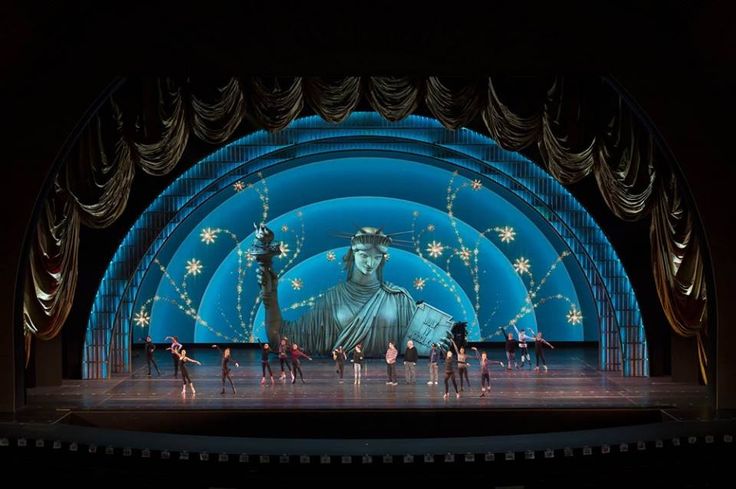
A three-story tall statue of liberty puppet – controlled by a team of puppeteers and voiced by Whoopi Goldberg. (Actors for scale.)
The puppets were a big feature of the show, and an element that always got a great response – especially on the days we had school shows. The Statue of Liberty puppet was the only one controlled with remotes from off stage. The others were controlled from the inside, with a series of gears and pulleys and bicycle pumps, by teams of puppeteers.
When I was hired, the show was already in previews, so the clock for opening night was ticking loudly. The show’s directors decided to add some circus spectacle last minute and hired 10 additional cast members with specialty skills. I was one of these late hires, as was Angela Butch (circus performer & founder of the Muse NYC) and a number of tumblers and dancers. The male ensemble dressing room was already packed to the brim, so they put a handful of us in a converted conference room. That’s the first time the a Rockettes show has been so large that they’ve run out of dressing room space!
My track was added to the show too late in the creation stage to be included in any of the promotional videos, but I can describe it in two words and a short video: bagel juggling.
In the opening song of the show, the protagonist, Bernie, sings a love song about New York City. “I love New York!” he declares, “The noise, the crowds, the energy. But, the mornings always mean the most to me…” and goes on to talk about his love for New York bagels and coffee. At that moment, I juggle a stack of bagels, weaving through the set of Grand Central Station, and freezing as I catch a high throw, in time with the music.
I worked with Radio City’s props team on a hybrid bagel/beanbag juggling prop. The first several shows, I juggled the genuine artifact. Their inconsistencies in shape and weight, not to mention a light design that was created for- and by dancers who didn’t need to track objects in the air on stage, offered an interesting challenge. We settled on a flat beanbag, stitched in the center, and airbrushed to give the impression of extra depth and shine. All said and done, these weighed about half a pound each.
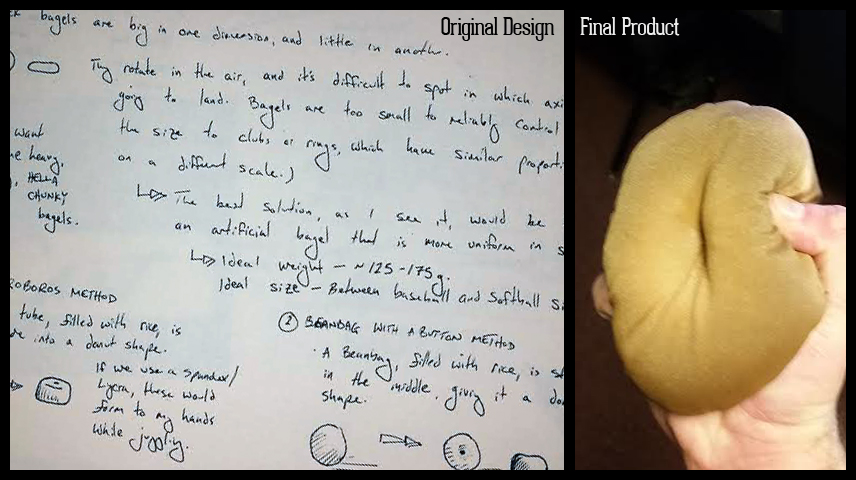
Bagel designs.
My other role in the show was juggling torches in the park as joggers and roller bladers and hotdog vendors carted by. I had to run like mad to get off stage at the end of the scene, as the sky opened up and rain started pouring all over the stage (and as thirty-six raincoat-clad tapdancing dancers rushed on stage!)
The main feature of the show was, of course, the world-famous Rockettes precision dance troupe. This team is composed of women from all across the United States. Auditions for the company are an open call, meaning that anyone can show up and try out for the team. This draws around one-thousand dancers each year, all vyying for a handful of open spots in the dance company. The audition lasts two days, and includes jazz, tap, modern, ballet, and ballroom combinations.
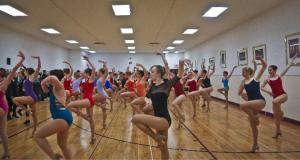
Girls audition for the 2013 Christmas Spectacular. (Source – http://www.texarkanagazette.com/news/2013/05/03/dancers-audition-to-appear-with-rockette-738559.php)
Dancers are measured when they audition for the company. If they’re not between 5’6″ and 5’10.5″, you’re not allowed to enter the rehearsal hall to audition. This is serious business, too – barefoot (not even socks) and a pencil through the hair to determine your true stature. — That’s a big range, though – Rockettes range 4.5″ in height! In the kicklines, though, they put the tallest girls in the middle and shorter ones on the outside. Since the girls all do their “personality kicks” (that’s what the group calls their trademark eye-level kicks,) it creates a nice optical illusion that makes it look like the dancers stand at the same height and kick to a uniform line. True as that may be, it sure looks laser-perfect!
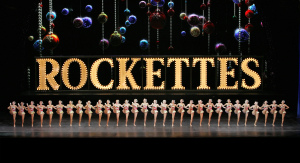
The world famous kickline! (Source: http://itsreally10months.com/2014/09/rockettes-just-leggy-ladies.html/)
Another bit of stage magic is their hair – the Rockettes are a team with matching, back-length ponytails, and have been that way for a long time… but only some of the dancers actually have long hair. The dancers are assigned half-wigs are matched to their natural hair color exactly, and meticulously maintained by a crew of hair technicians (yep, that’s a thing!) at hair stations across backstage areas. Even if you’ve already got long hair, it’s tied in a bun with a prosthetic ponytail attached.
The show is run by a giant crew – one that outnumbers the massive 70+ artistic team. Throughout my time there, I interacted with the stage managers, props team, stagehands, elevator operators, fire marshals, dressers, and all kinds of other technicians. One of the most labor intensive transitions in the show was for the transition from the “Singing in the Rain” scene into the “Times Square” scene. Here, the splashback from thousands of gallons of water had to be mopped from the stage (most went into a splashpan, but the stage was still wet!), twenty-something cast members had to get into elaborate costumes quickly (including some giant, body-swallowing mascot outfits,) all of the elevators went down, and a number of props had to be set.
One of my castmates shot and uploaded a backstage video of the transition, which you can see below. (The video included the following text: “Disclaimer: This was shot on an iPhone 4 from inside a Paddington Bear suit. Also, no Penguins were hurt in the making of this video.”)
All said and done, this contract I…
– Performed in 73 shows and 9 previews (a total of 82 productions, or about 7,380 minutes of show!)
– Changed clothes 656 times backstage (not counting changing into suits and tuxedos for after parties!)
– Climbed 48 flights of stairs daily (my calves have never looked so good!)
– Logged some 120 hours of juggling practice (if you want to see some training videos, head on over to my Instagram account!)
All in all, it was a lot of work, but a terrific contract. I really hope to work at Radio City again next year… We’ll see what the plans are for the 2016 Spring Spectacular!
2014 by the Numbers
Accounting and reflecting are two important year-end activities that small business owners all across the world engage in. I’m no exception!
As I tidied my house this year, sorting through old programs and ticket stubs and finding shards of broken plates all over the place, I thought about the year’s happenings and started gathering data. Not one to throw away frivolous year-end statistics, I’ve compiled it all here for your enjoyment!
Here you are, friends! Here’s my 2014, by the numbers.
I visited six countries this year – the USA, Canada, Ethiopia, China, New Zealand, and Fiji.
Fiji was a kind of happy accident – their national airline has an “unlimited layover” policy that afforded me a little vacation on my way home from New Zealand. No shows there, but I sure did juggle on the beach!
I juggled in eleven states this year, too. That was Oregon, Kansas, Missouri, Illinois, Indiana, Arkansas, Pennsylvania, New York, Massachusetts, Vermont, and New Hampshire.
The folks in New Hampshire went crazy when I announced it was my Granite State debut that night. “Live free or die! Don’t tread on me!” they shouted. They also went crazy when I announced my box of “guns with tiny American flags on them” during my rat-hoop act. (That one worried me a little.)
I traveled a total of 65,404 miles traveled for shows in 2014.
(That’s enough juggling to circle the globe two and a half times!)
Eight stagings of “The ‘Dinner and a Show’ Show” in four states, winning one award, getting three lovely newspaper reviews, and a dozens upon dozens of audience comment cards (including three crayon drawings of Claude the lobster, and four phone numbers.)
Two wonderful pop-up shows for patients at the Hamlin Fistula Hospital Addis Ababa, Ethiopia.
Catherine Hamlin, the woman three to my left, is working to eradicate obstetric fistula in Ethiopia. She’s doing an incredible job, too, with a network of hospitals all across the country. She was a Nobel Peace Prize nominee in 2014!
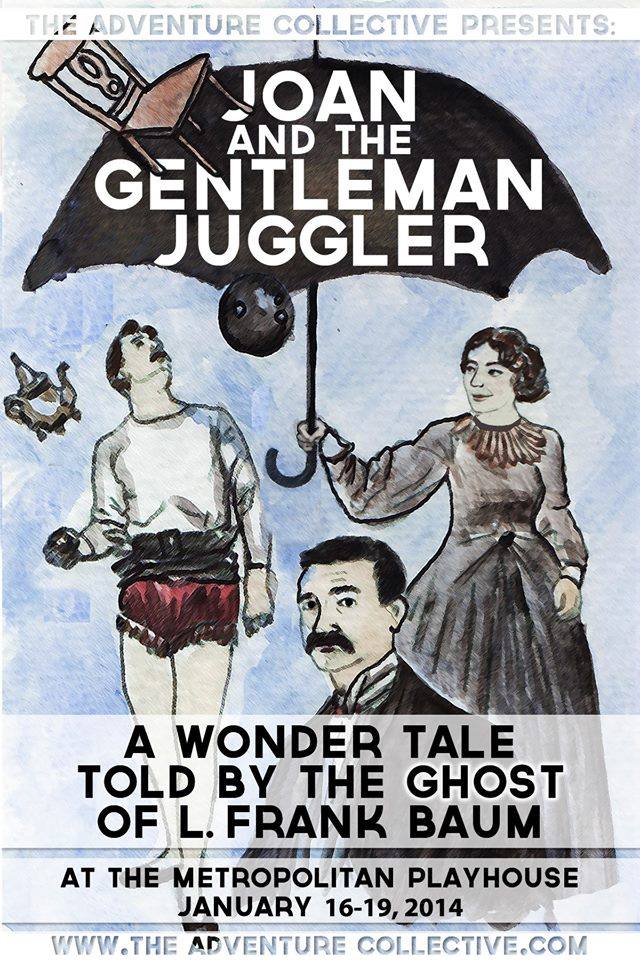
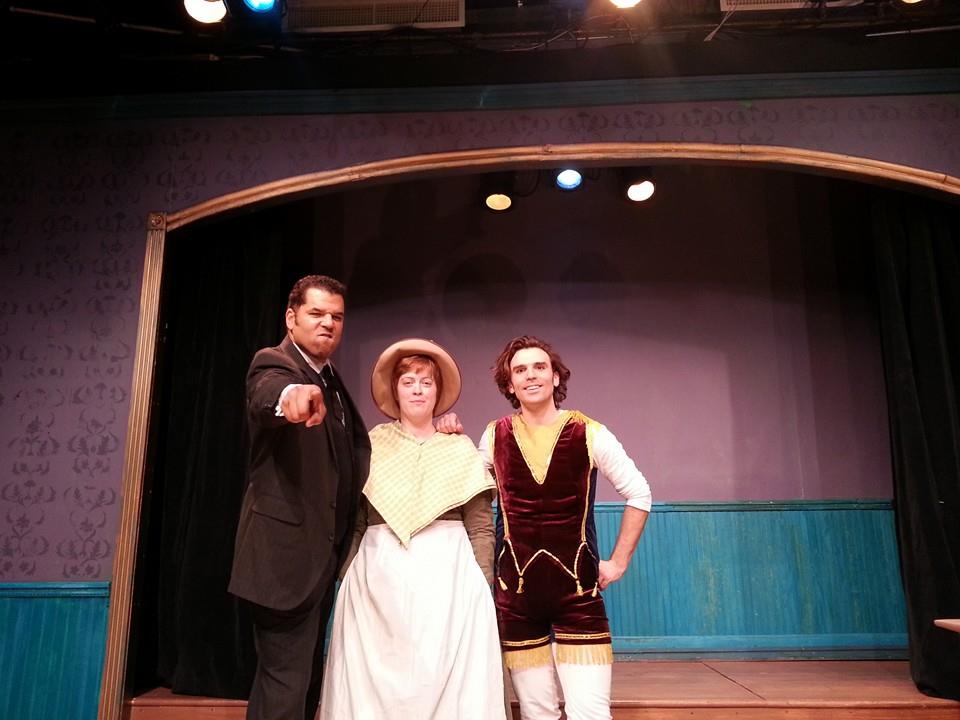 Four stagings of “Joan and the Gentleman Juggler” – a new production with my friends Gabi Sinclair and Ric Walker. I learned one new stunt for this show – a version of Cinquevalli’s famous pool cue and sherry glass balance.
Four stagings of “Joan and the Gentleman Juggler” – a new production with my friends Gabi Sinclair and Ric Walker. I learned one new stunt for this show – a version of Cinquevalli’s famous pool cue and sherry glass balance.
Despite the trick collapsing a half dozen times when I was learning it, I only ever got hit on the head once! And never got a black eye! Small victories.
Two nice newspaper articles about me and my work with nonprofits! (Brattleboro Reformer & New Hampshire Union Leader)
Fourteen incredible hamburgers on the road. (Most memorable? The “Tom Selleck” burger at the Elbow Room Cafe in Vancouver, BC. Hamburger, bacon, brie, banana, pineapple, and peach with a chipotle aeoli. What?!)
See for yourself – follow #hamburgersIhaveknown or @thomwalljuggler on Instagram! (Six-hundred and nine others already are!)
Three killer benefit shows for the New England Center for Circus Arts. Two were in the Latchis Theater in downtown Brattleboro. (Who could resist performing on that stage! Did you see the archways? Did you see the constellations?!)
The third show was at Dixon Place on Manhattan’s Lower East Side – the kickoff show for NECCA’s capital campaign. They’re raising money to build a new circus school building from the ground up. (How cool is that?!)
Three cities in six months with the largest circus company in the history of the world! Easily the most stressful contract I’ve been on, but also one of the most rewarding. Over the course of this contract, I performed for around 200,000 people.
Nearly one-hundred pre-shows with four animators and one lizard puppet.
From an email with my dad:
“Before the show, I do animation/walkaround through the audience as they’re waiting and getting seated. I’m dressed as the scientist, but with a giant lizard puppet under an arm that I use to surprise people with. He’s got this fantastic tongue that shoots out quickly – good for startling people and getting a rise out of groups of people who watch. At the show two nights ago, I was walking around the seats near center stage and got a big reaction from the crowd. When I got backstage, I learned that I’d attacked the prime minister of New Zealand with my puppet?”
Three days at a booking convention in Colombia, Missouri in January. (The number of stories from this convention? Dozens. “You ain’t never been to a tractor pull, son?” “Oh, my wife and I really have fun, if you know what I mean.” “Who wants to buy this quarter hog?”)
One new acrobatics partner. (One hundred and sixty pounds on my head.)
Two-thousand, two-hundred – The number of seats at the Auckland Circus Convention’s gala show.
One – The number of drunk guys who decided to try and steal a ball from center stage during my act.
“One hundred percent!” – The amount of focus to put on a balanced object, in order to balance and juggle (as chanted in meditation by my dedicated students!)
Twenty-five plates were smashed in the initial devising process for “The ‘Dinner and a Show’ Show.” One part enthusiasm, one part polished cement stage.
Thirty-six statues of Snoopy in front of my stage in Hong Kong. Six statues of Snoopy on my stage in Hong Kong. Seven stories of people watching me from above, in the atrium of the mall.
I packed 16 backup plates for these 10 shows, just in case some broke in transit or on stage… but not a single one did!
One new leopard-print suit. The Hopeless Throwmantics are going jungle-casual in 2015.
One IJA medal. (For my mouthstick act! The first medal awarded to a mouthstick routine in the IJA’s sixty-seven year history.)
…all in all, a tremendous 2014! Where will 2015 take me? I’ve got a few interesting leads already, but I’m not about to spill the beans quite yet. Stay tuned, friends! Wishing you all a successful year ahead, and I hope all of the seeds you plant come to bloom!
[hr]
Writing “The ‘Dinner and a Show’ Show”
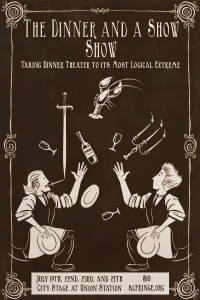
Our gorgeous poster, courtesy of friend and artist Shawn Gaston
This past Summer, Benjamin Domask and I wrote a comedy / juggling / melodrama about two waiters and a rubber lobster. The shows went very well, we had some nice reviews, and even won a “Best of the Fringe” award! A turn of events meant that we had to write the show remotely. many people asked us how we wrote the show, puzzled by the idea of a duo circus show written remotely.
So, friends! Here’s the story-
Last year, I was invited to emcee a series of shows for Kansas City’s “MoonDrop Circus” – a community circus organization that puts on circus productions with local performers all across the city. They brought me in to add some professional flavor from a slightly further afield – after all, Kansas City and Saint Louis are neighbors!
The shows I was to emcee were all part of MoonDrop’s inaugural “Community Circus Week.” This week-long celebration of circus featured workshops and shows every day. They held an Open Stage event in the middle of the week, and were looking for acts. When they asked me if I knew anyone who might be interested, I told them to save a spot for me and my friend Benjamin Domask.
Benjamin and I have known one another for several years through the juggling community. We met at a small juggling festival in Iowa in 2011 and had stayed in touch since then, sending each other videos every once in a while. In a recent conversation, we’d toyed around with maybe working on a piece together. The MoonDrop Open Stage sounded like a good excuse to get together, put something on stage, and see if we partnered well. He drove down from his home in Minneapolis some 18 hours before the Open Stage curtain went up, and we immediately got to work.
The piece we wrote that night is what eventually turned into “The ‘Dinner and a Show’ Show.” It was a silent, volunteer-driven juggling act that featured plate juggling and some rudimentary mouthstick skills. You can see a short demo from our MoonDrop Open Stage show below.
We were encouraged by how well the audience responded to the act, and started talking about expanding it. “Where can we find a stage for it?” “How can we turn ten minutes of mime and juggling into a full hour?” “How can we get together to rehearse?” The answer to these questions seemed to be the Kansas City Fringe Festival.
Neither of us had ever done a Fringe Festival before, but from our friends’ accounts, a Fringe seemed the best place to stage a workshop performance of a circus-waiter-slapstick-clown show. Comparing our calendars, the only festival that didn’t clash with one of our other projects (we still have solo careers to maintain, after all!) was the KC Fringe. By the end of the week, we’d sent in a deposit. We had six months to collaborate on this new project – all the time in the world compared to the 18 hours we had for the last one.
Benjamin and I exchanged lengthy emails about where to take the Fringe show. We knew that it was a clown show, where he was low status and I was high status. We knew it had a food theme, and that our motivation was to serve a volunteer from the audience. We knew we wanted to have that volunteer on stage for over half of the show. We spent the first three months generating ideas to choose from later.
For your edification, here are some ideas that didn’t make it into the Fringe Show, directly from an email I sent to Ben.
– One of us has a helmet with a blender mounted on the top of it. This person is on a pogo stick. There is an extension cord running offstage. Waiter and/or volunteer load up the blender via ladder/fishing rod/robot arm. A smoothie is made. A mess is made.
– Water-pour arm-curl. Walk around a pitcher of water as you pour water into a glass.
– Apples and forks – Somehow, a series of forks skewer a series of apples. Throwing, rolling, etc-ing. Perhaps forks are attached to leather belts that are wrapped around a waiter’s arms?
– Loading up the waiter – A waiter is over-burdened with things in arms, tray, etc. Waiter must go from stage right to stage left without dropping anything. (A few scheduled near-misses are implemented as skills.)
– Restaurant gets swamped with (invisible/imaginary) patrons, waiters scramble to keep up:: nice theatrical moment here where people filter in via background noise – http://www.youtube.com/watch?v=jAg6tyC9Xxc
– Waiters are wearing half-aprons, as is customary in some fancy restaurants. The apron is removed, a vestigial third leg is discovered. (….or something less grotesque?)
– A flower is thrown into a vase from across the stage.
– A waiter is given the phone number of a patron. Waiter decides to pursue a relationship on-the-clock.
– A wine-rack falls horizontally. Waiters must bottle-walk to get from one part of the stage to another.
– Two waiters butcher a chicken // two waiters accidentally serve patron a live chicken.
– A patron orders an egg. The waiters can’t find an egg. They go straight to the source and attempt to coax an egg out of a chicken.
– Pyramid champagne pour – you’ve seen these, yeah? – http://www.youtube.com/watch?v=k-wXLnMTiwY
– Waiters make a sandwich, cigar box style. Stack of ingredients vertically on the ground get integrated into a sandwich like a cigar box slapstack. (Like this, but better… http://www.youtube.com/watch?v=bikubkSZOXs )
– A song is played by blowing on bottles.
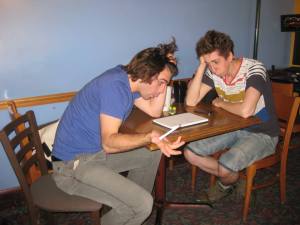
This is what Ben and I looked like when we finally got together and revisited these lists. “What is this crap?!” I exclaim. “I dunno, you’re the one that wrote it,” Ben thinks to himself.
After the idea generation stage, we started carving out a rough narrative arc. The first exercise we tried is fondly referred to as the “children’s storybook drill”, where you take ideas and group them under the title of a chapter in a hypothetical children’s book. Then, you find ways to order those chapters into a rough narrative.
Here are a few chapter titles Benjamin and I came up with through this drill. (Once again, thankfully, very few of these ideas made it to the final edit!)
A SELECTION OF HYPOTHETICAL CHAPTERS FOR THE HYPOTHETICAL ADAPTED CHILDREN’S STORYBOOK OF THE TWO HANDSOME WAITERS’ NEW STAGE PRODUCTION: THE DINNER AND A SHOW SHOW
– The two handsome waiters light a candle
– The two handsome waiters pour a glass of water
– The two handsome waiters set the table
– The two handsome waiters are award-winning sommeliers
– The two handsome waiters use mnemonics to remember the order
– The two handsome waiters demand a tip
– The longest piece of spaghetti
– One-hundred ways to skin a cat
– How to accidentally pour a cup of coffee from across the room
– An accident in the kitchen -or- have you seen my finger?
– A watched pot boils eventually
– “Sorry, we’re fresh out of that” “Sorry, we’re fresh out of that” “Sorry, we’re fresh out of that”
– The two handsome waiters break some eggs
– One angry waiter needs a cigarette break
– How to catch a rat in the kitchen
– The two handsome waiters roll some napkins
– “My soup is cold”
– Two handsome waiters present the bill
– Love tears the waiters apart
– The two handsome waiters kiss the cook
– The two handsome waiters are naked under all of these clothes ((under these aprons?))
Our original plan was to meet up in St Louis with a stack of notecards and bang out a script in person a few months before the Fringe started. However, after sending this last email, I got a phonecall from Cirque du Soleil, inviting me to fill in for a juggler on their show “Totem.” We’d have to finish this project remotely.
Benjamin and I continued sending each other emails. Benjamin took over the role of artistic director, and I started work on promoting the show. He’d send me drafts of the script, I’d fill in ideas, juggling moments, and a few one-liners. He’d take the notes and rework the script as he saw fit. We met every few weeks over Skype to talk it over. I would order him potential props to test out and generate ideas using Amazon.com as our marketplace. The script took a huge turn when I sent him a box of rubber lobsters. “What if you have a pet lobster… and I want to kill it?” I emailed him. “Yes. …YES.” he replied.
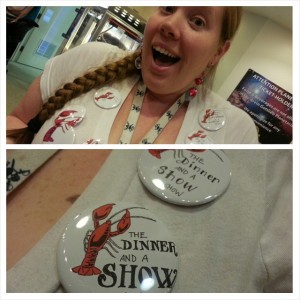
Claude was an instant hit at the KC Fringe. Here’s Dinner and a Show Show friend and lobster advocate Stephanie Davis and her (homemade!) buttons!
From that point on, Benjamin started carrying the lobster (who he affectionately named Claude (get it?!)) everywhere with him. He would introduce him to people; friends, family, strangers, whoever took an interest in the red creature living in his backpack. Eventually, people began to ask, “Where’s Claude?” if he was not immediately visible.
While this crustacean friendship formed, there was an inherent problem with the show: We’d spent zero time in the rehearsal space together. While Benjamin and I had proven we could work well together in the past, the only time our schedules lined up to rehearse was three days before the premiere. To add a little pressure, we were booked at ArtBar – a performing arts bar and venue in St Louis – to do a special “workshop performance” of our piece at the end of this three day period. A little insane, maybe, but we felt it was safer to premiere a nascent version of the show in St Louis for friends than in Kansas City for a real, live paying audience a week later. If something flopped, we could alway rewrite it in Kansas.
Benjamin drove through the night after a gig in Minneapolis, arriving in St Louis in the early morning. Once there, the real work began – our script was a narrative string of dialogue, interspersed with placeholders for routines.
One page, which turned into a solid eight minutes of the show, looked like this:
“Hey hey! I knew we had some wine around here somewhere!”
“Whatever took you so long?”
“I had to go down to the wine seller (cellar).”
“The wine seller on the corner?”
“That’s the one! And he sold me this big box of French champagne!”
((WINE JUGGLING ROUTINE GOES HERE – In the process, waiters discover there is no wine. They go about finding wine together.))
“Hey hey! I knew we had some wine around here somewhere!”
Another page, which turned into the opening fifteen minutes of the show, looked like this:
((Introductory music and jokes play while house is dark.))
((Lights go up, waiters can’t find the restaurant.))
((SETTING THE TABLE ROUTINE GOES HERE.))
“Well, that was much more efficient.”
((Benjamin asks Claude for a joke.))
We had our work cut out for us. Luckily – and, perhaps, weirdly – the ArtBar had a dance studio in the back of it. We camped out there for the next three days to write the juggling acts, learn our lines, rehearse like mad, and through it all – rediscover the trust that had helped us back in January.
In order for a show to feel complete, the performers need to be in synch with one another – trust is very important. Benjamin and I believe that any circus show should be put together so it’s interesting even without any skills at all. That way, it can appeal those familiar with circus and those who aren’t. It might seem counterintuitive for a duo juggling theater show, but the throws and catches are often the last thing to get written down.
We spent the first day on plate juggling, mouthstick, and candle-lighting. The next day was spent hashing out choreography for the acid-flashback / nightmare sequence and finale. There’s not a lot to say about these two days, other than that we put our heads down and started devising material. If I ended up holding a bottle up over my head, where could that sequence go? Where might it go from there? How could we apply intention to those sequences? How does it feel if we do it quickly? Slowly? (Are we spending too much time on this? Let’s run with this choreography and move on to the next bit. We’ll see it it develops futher in Kansas City.)
The third day, of course, was the premiere. We spent that morning running through lines and sequences and the afternoon eating burritos and clearing our heads. The folks at ArtBar cooked up a mess of spaghetti for our audience to enjoy. Our audience got into their cars started driving to ArtBar, unwittingly about to experience the biggest miracle of any of our lives: the show Benjamin and I wrote in such unfavorable conditions didn’t suck.
There were a few drops, for sure. Some lines were missed and some pauses were stepped on. All in all, we were very pleased with how it went. Early on in our plans, I had the idea for a breath-mint and comment-card table in the lobby – a way to get some feedback from the audience, as well as some drop quotes for promotion during the Fringe (and, hey- who doesn’t like a mint after a show!) The reviews were generally quite favorable. Many audience members asked for more juggling. Some folks expressed their love for Claude. Others gave us their phone numbers.
“The ‘Dinner and a Show’ Show” changed quite a bit as the Fringe festival progressed – we found moments to linger on, cut some lines and replaced others with more satisfying improvised moments (“Ring ring. Hello, the idiot store? It’s for you.” “Yes, the idiot store. I will return him right away.”) The piece felt fresh and new each show- thanks in part to a new volunteer each round, thanks in part to the discoveries we made each time we put it up. We added another juggling act after our tech rehearsal, the day before the show opened, too. I’m sure the show will continue to evolve throughout the next year – we’ve got big plans for our little dinner show.
Don’t just take my word for it, though – compare the video from our MoonDrop Circus Open Stage piece to our new trailer. This demo video was created from our fourth showing at the Kansas City Fringe Festival and our teaser performance at the Welcome Show for the International Jugglers’ Association’s 2014 convention. I think you’ll notice a difference!

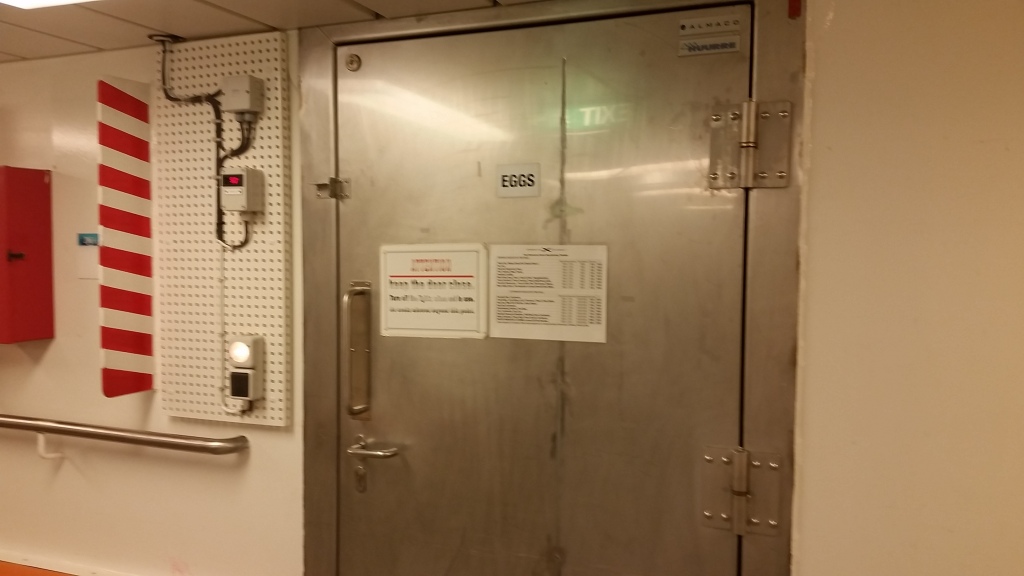
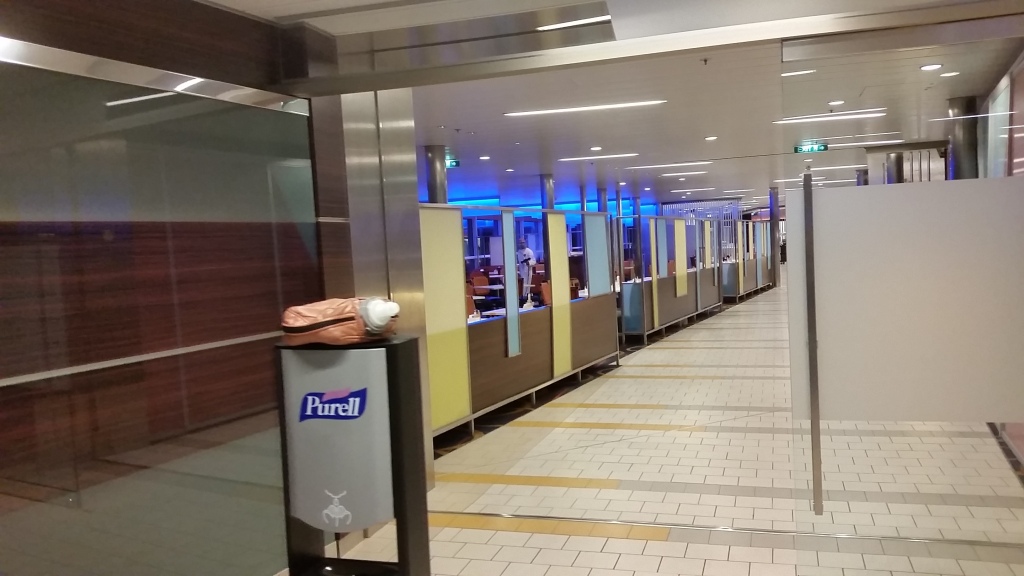
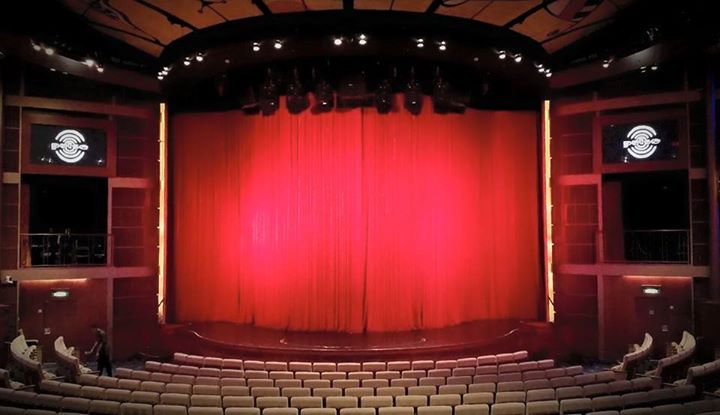
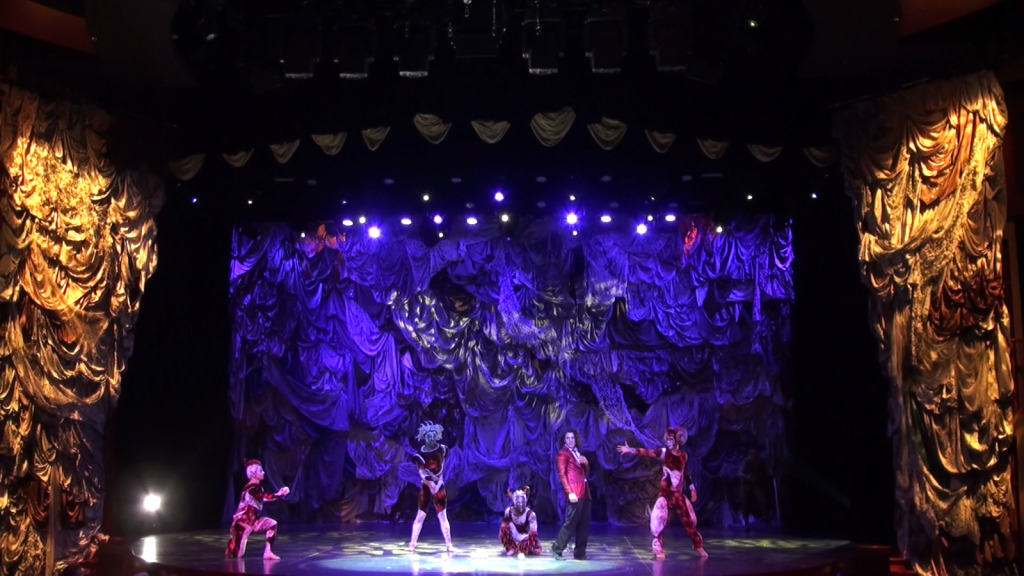
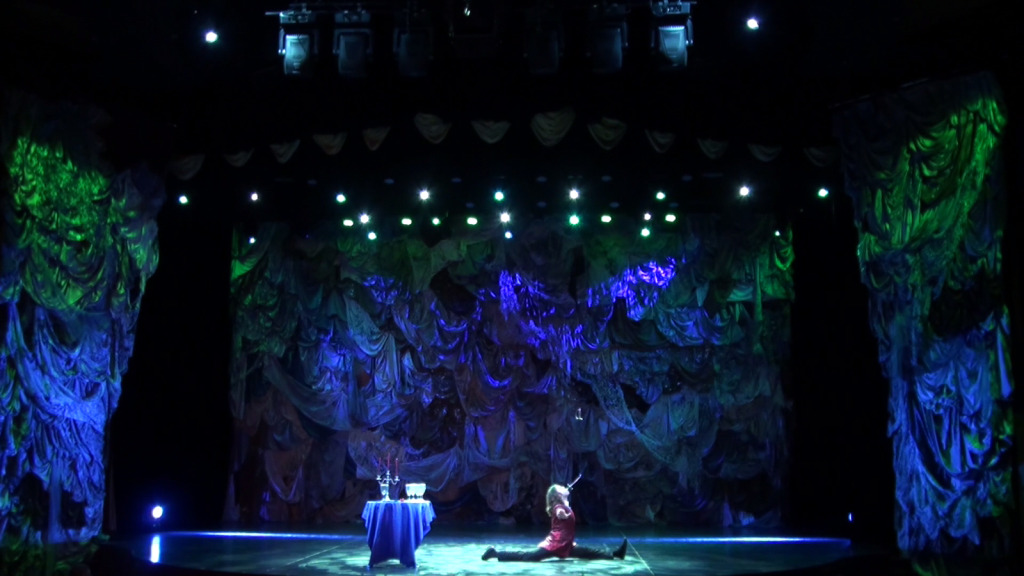

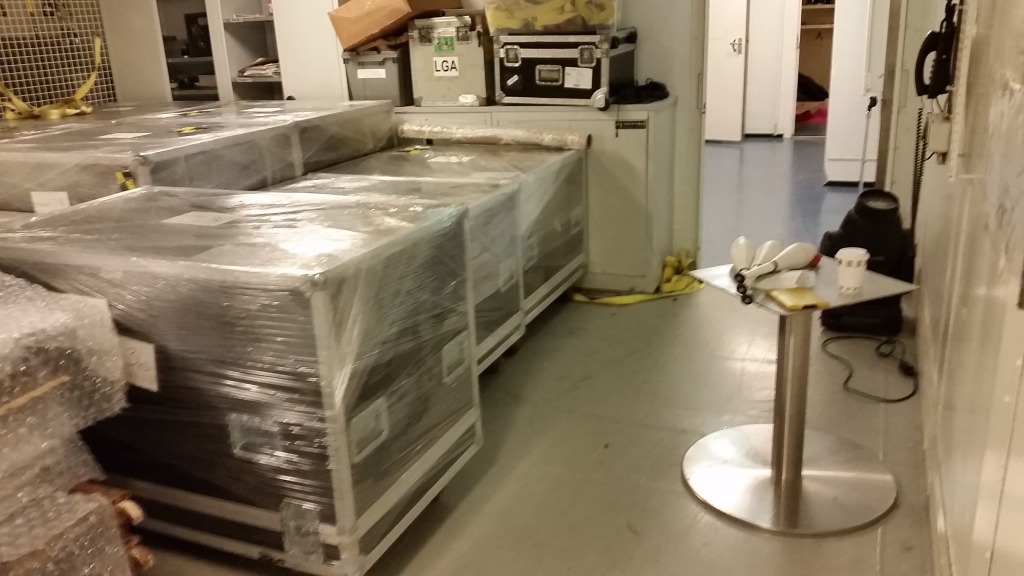
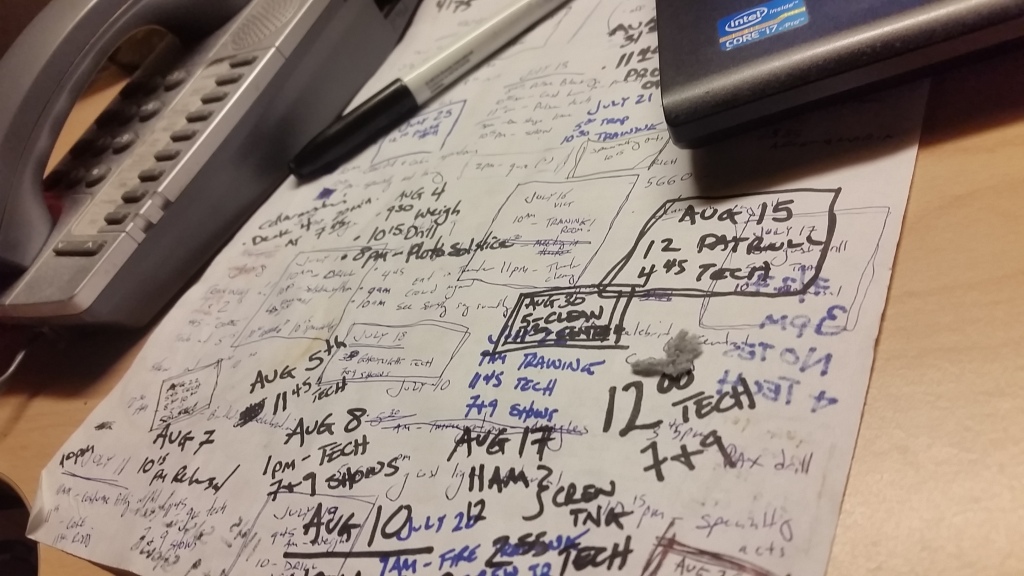
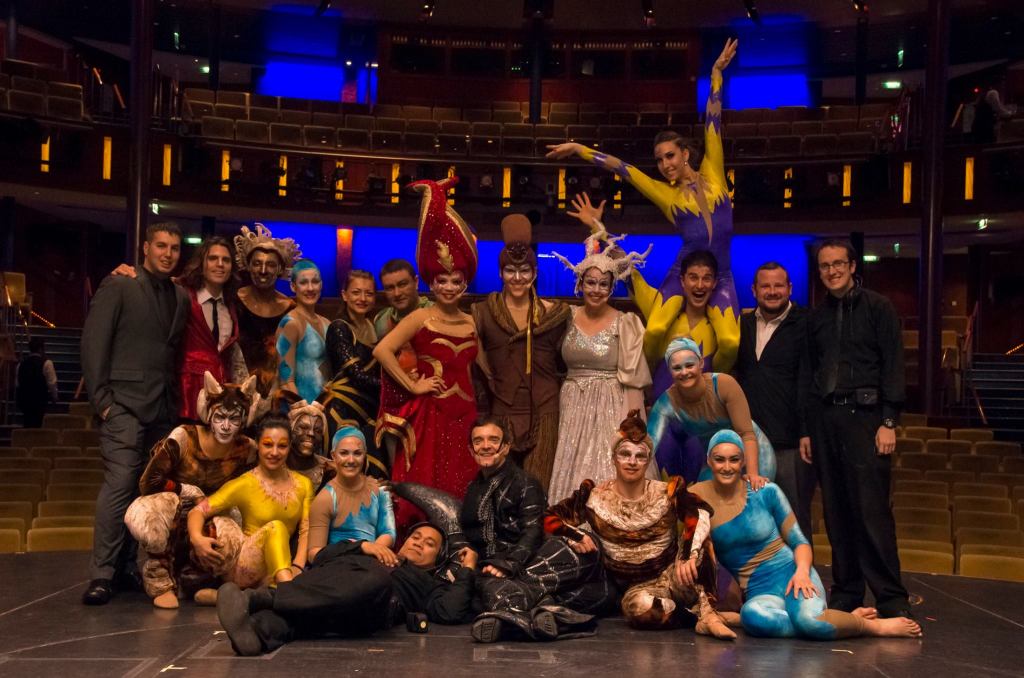
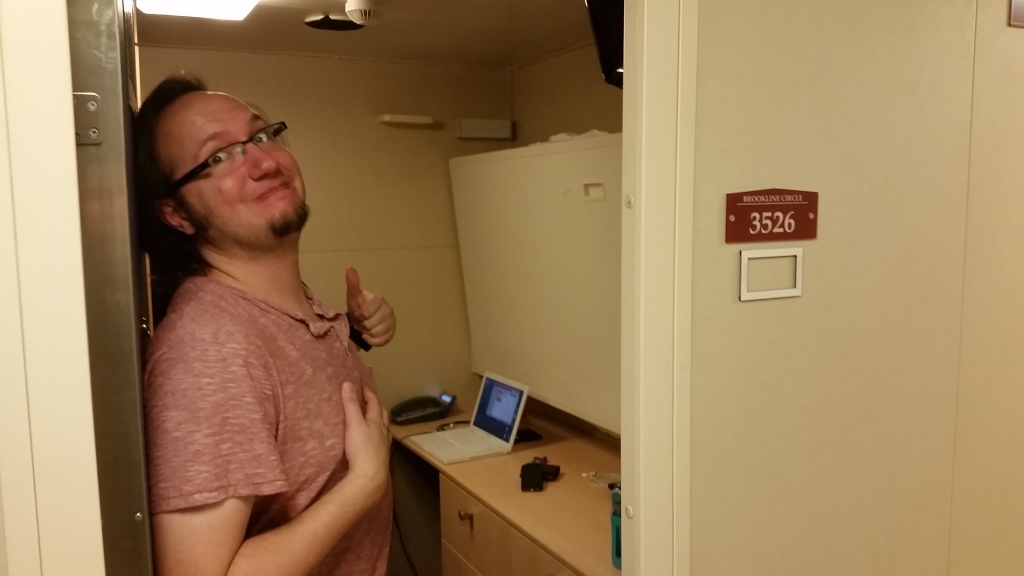


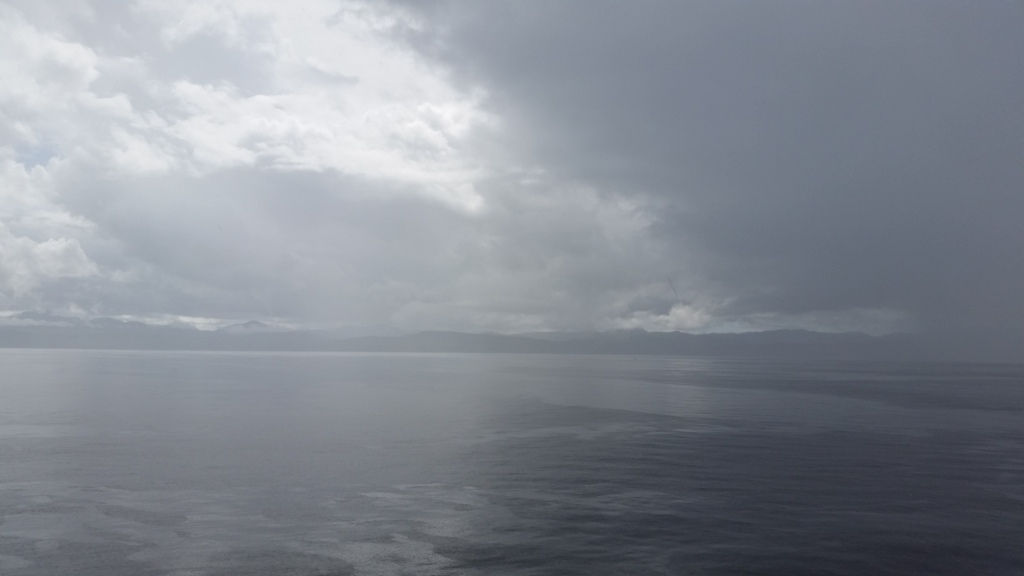
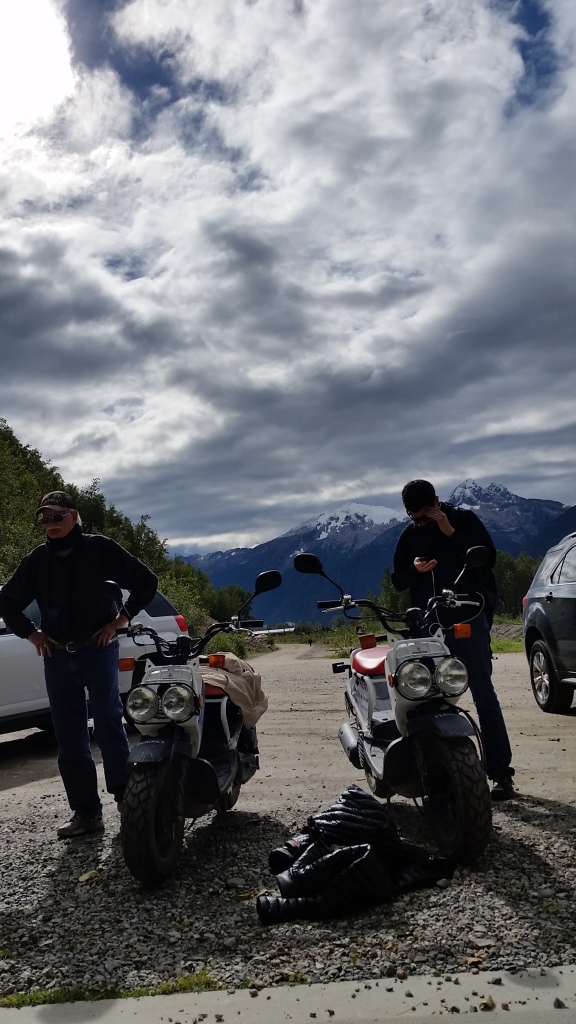
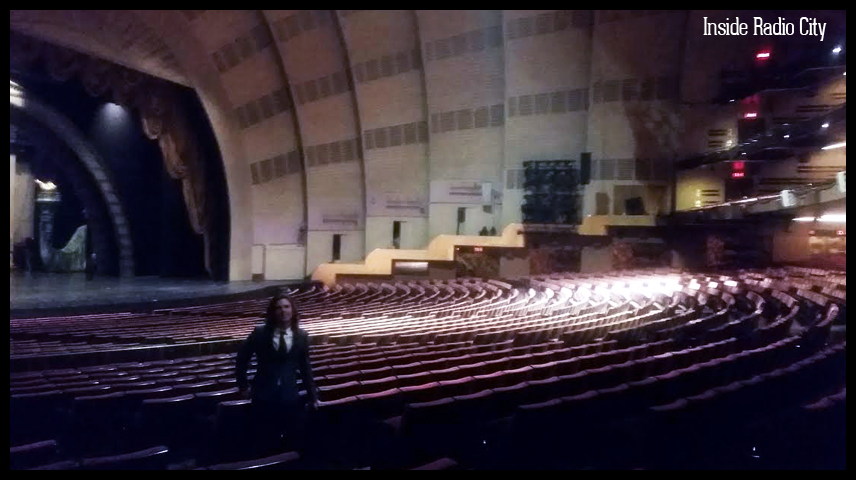
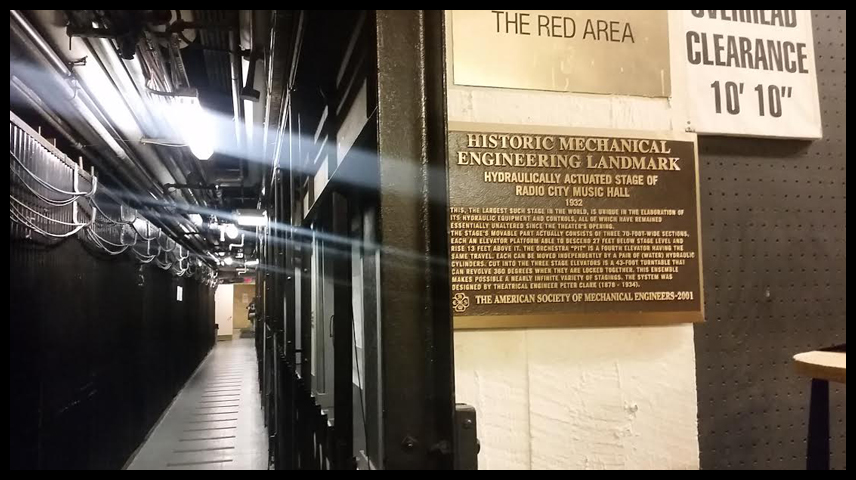
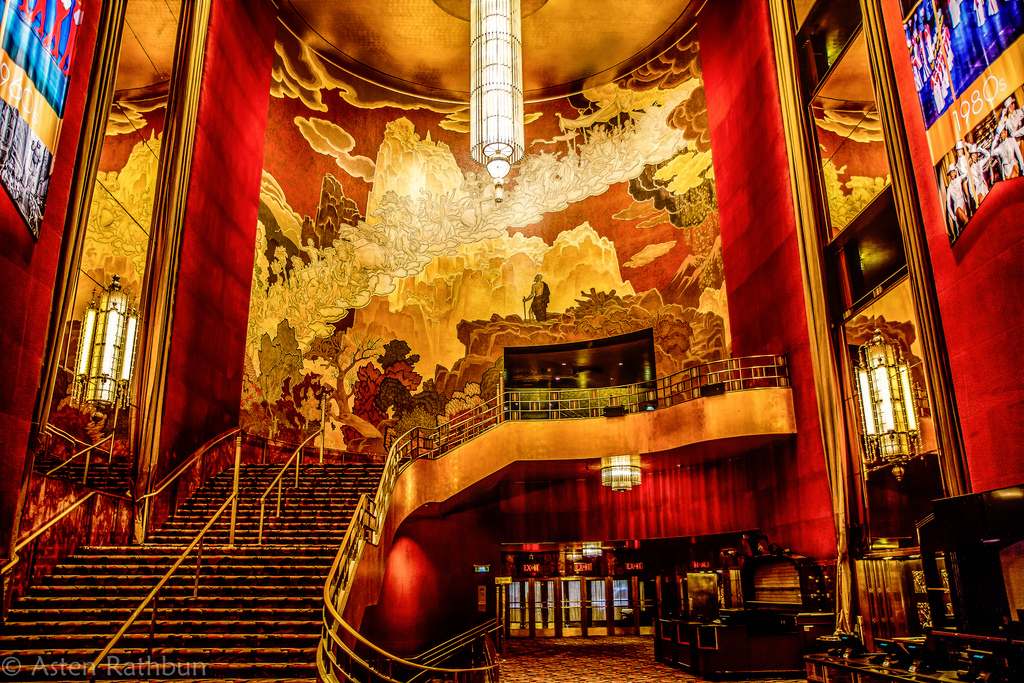
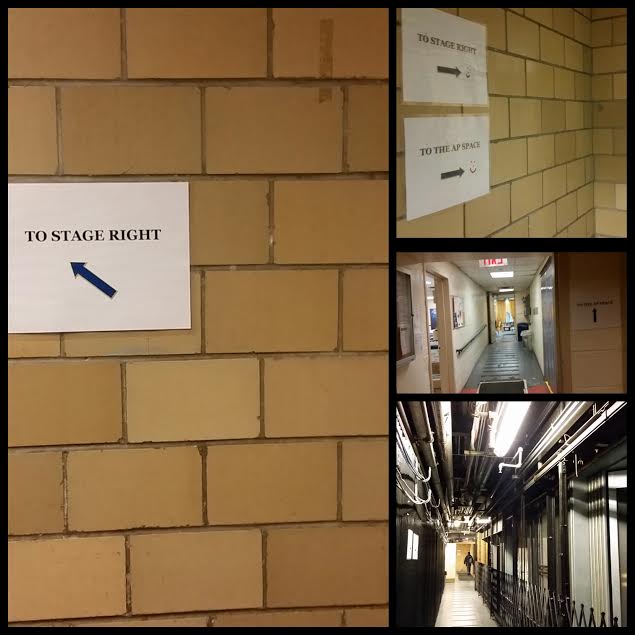
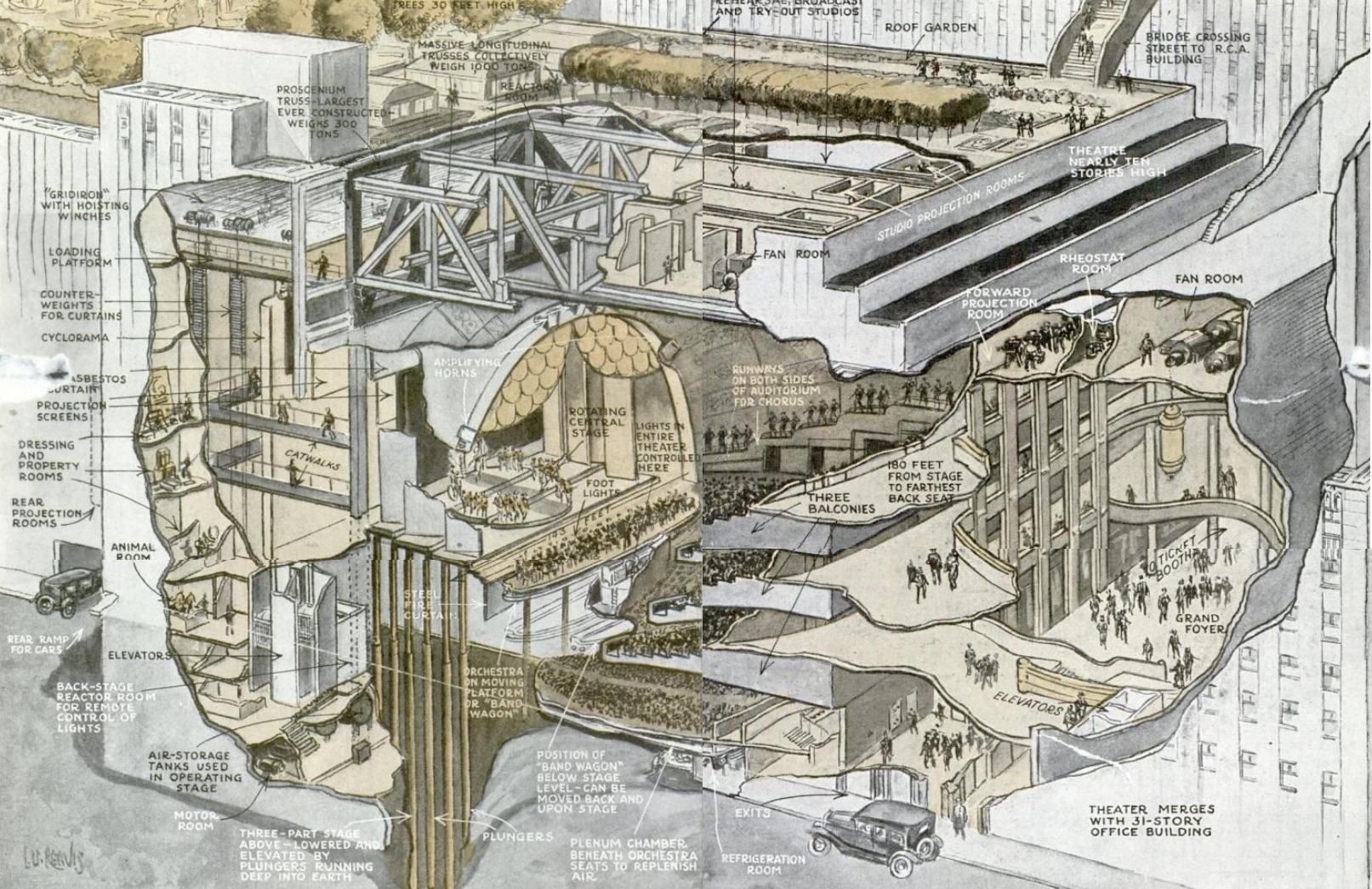




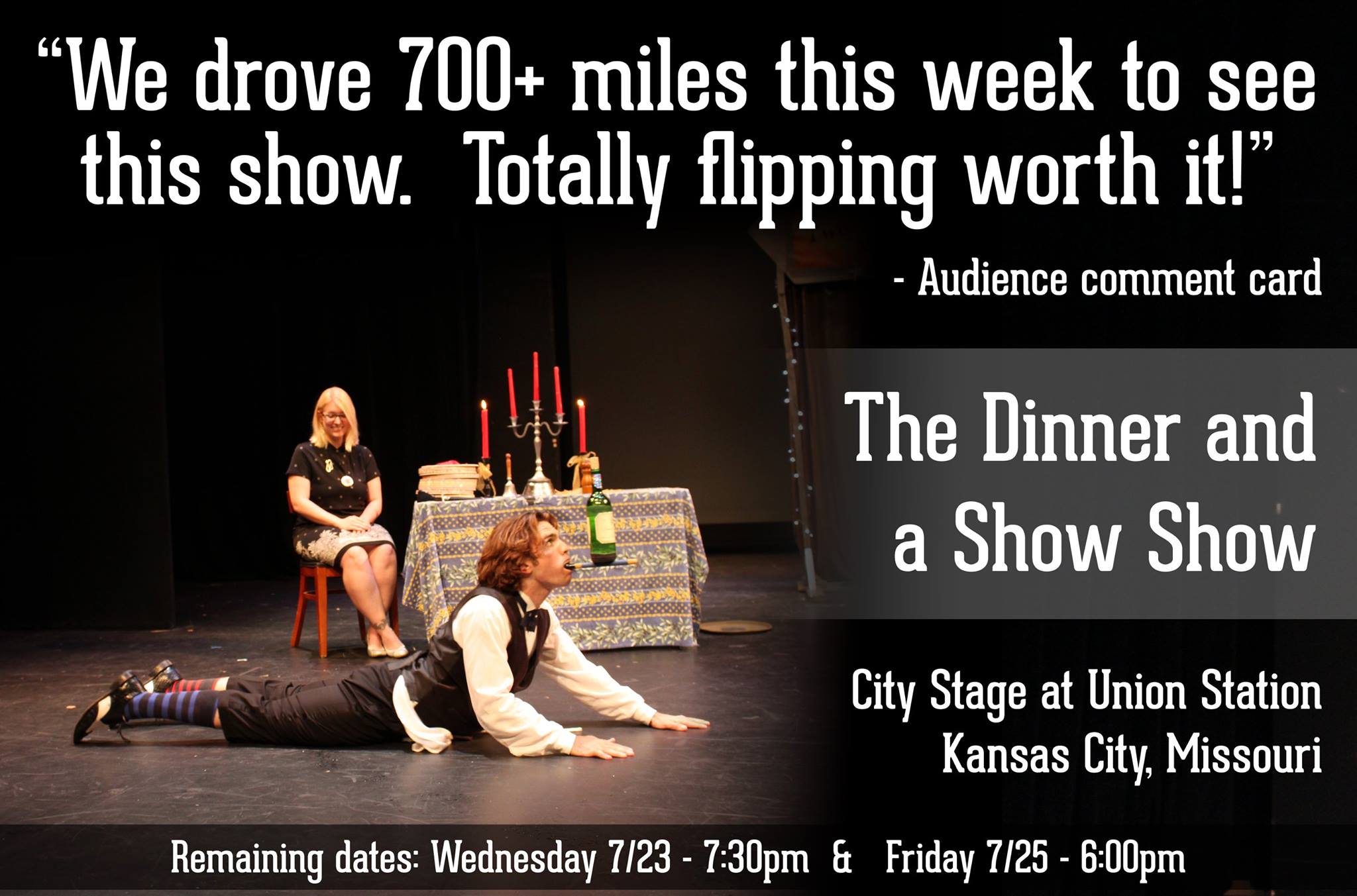
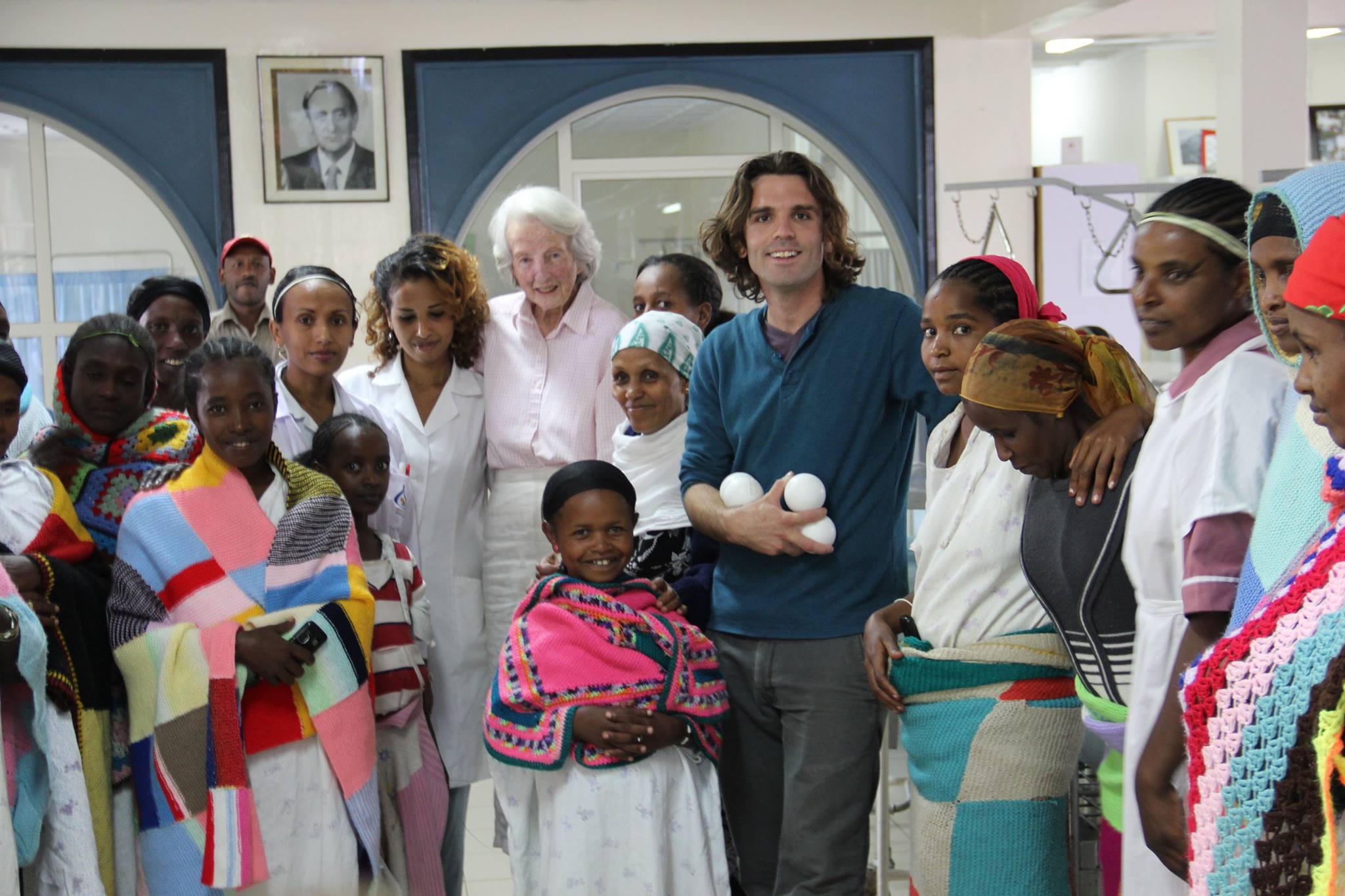
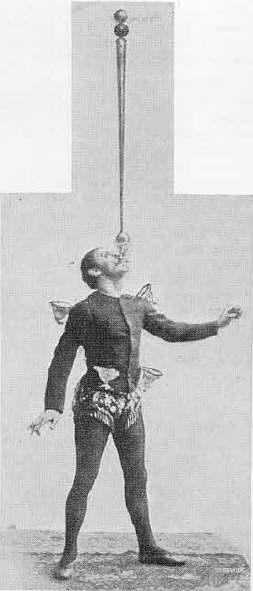
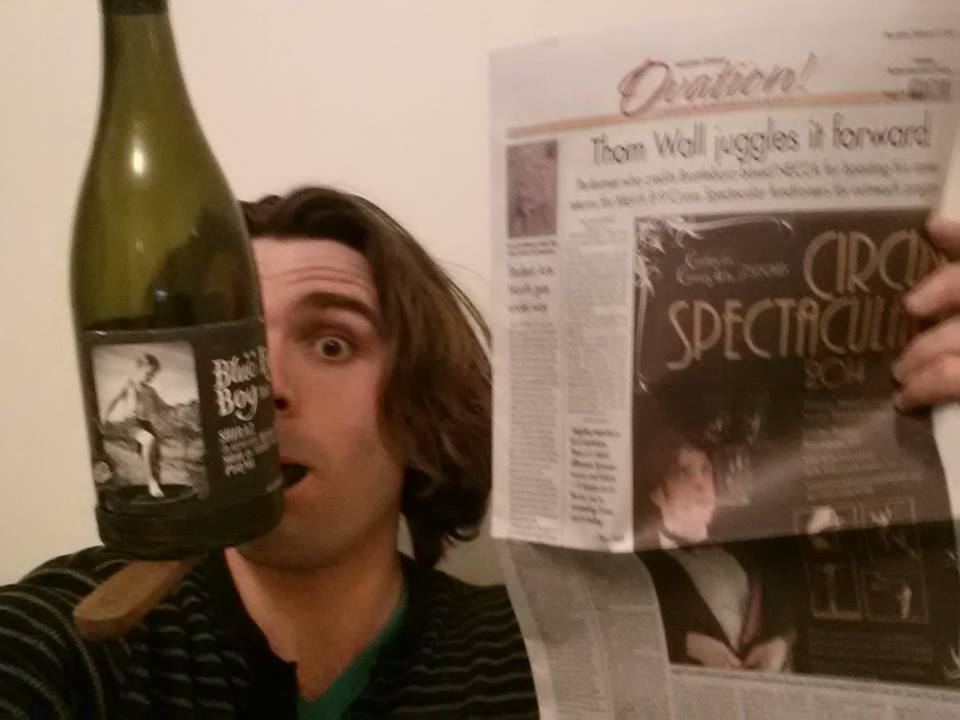
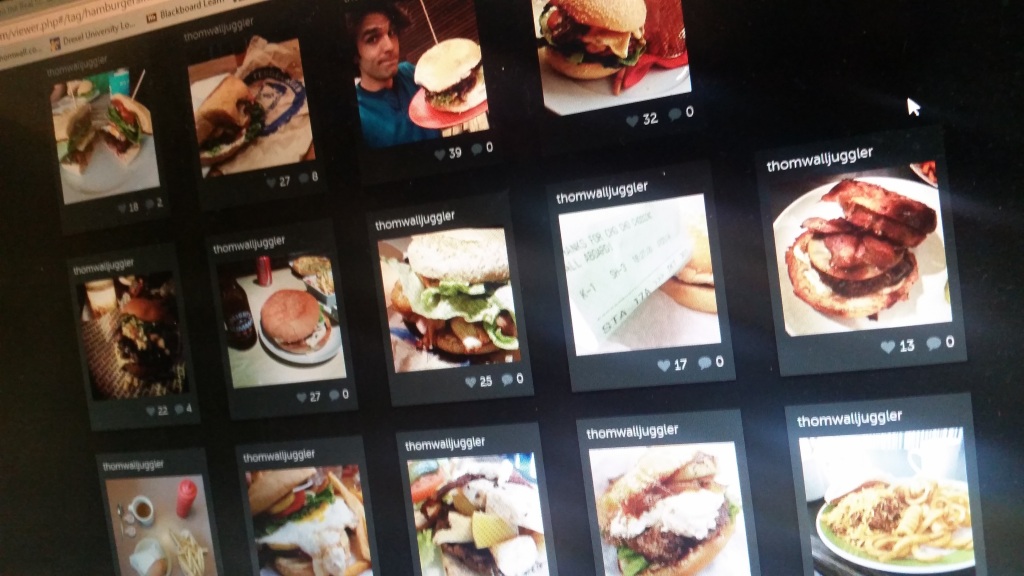
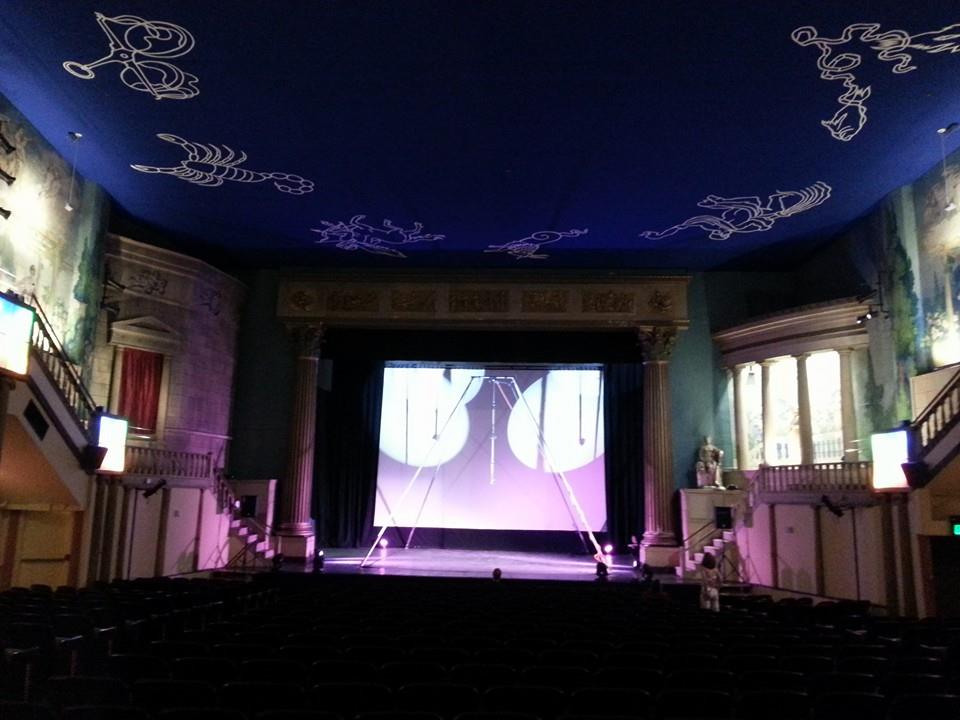
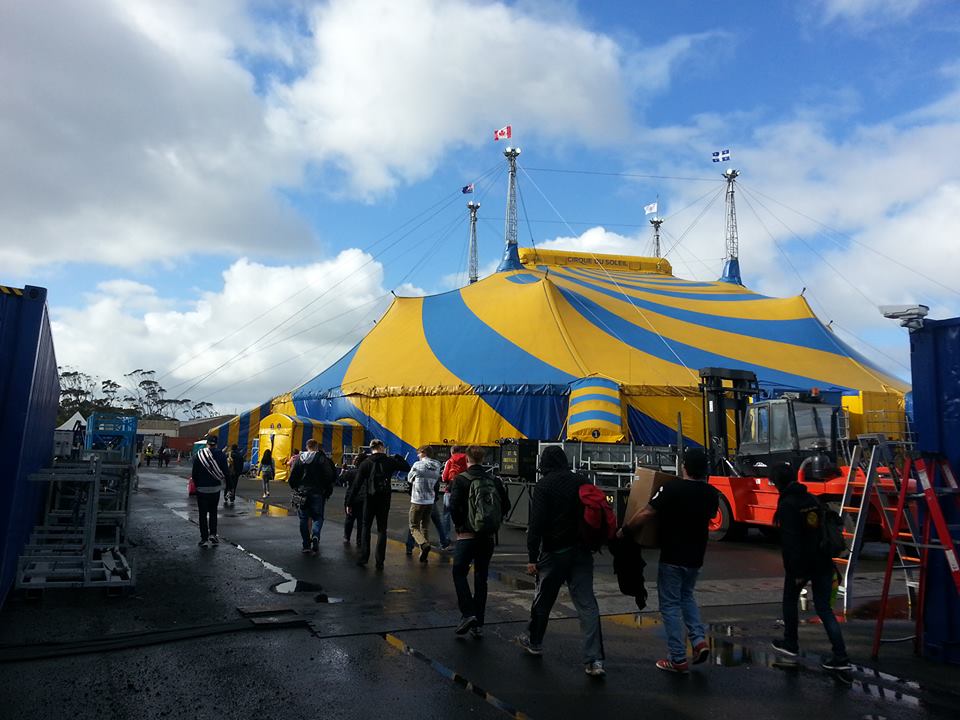
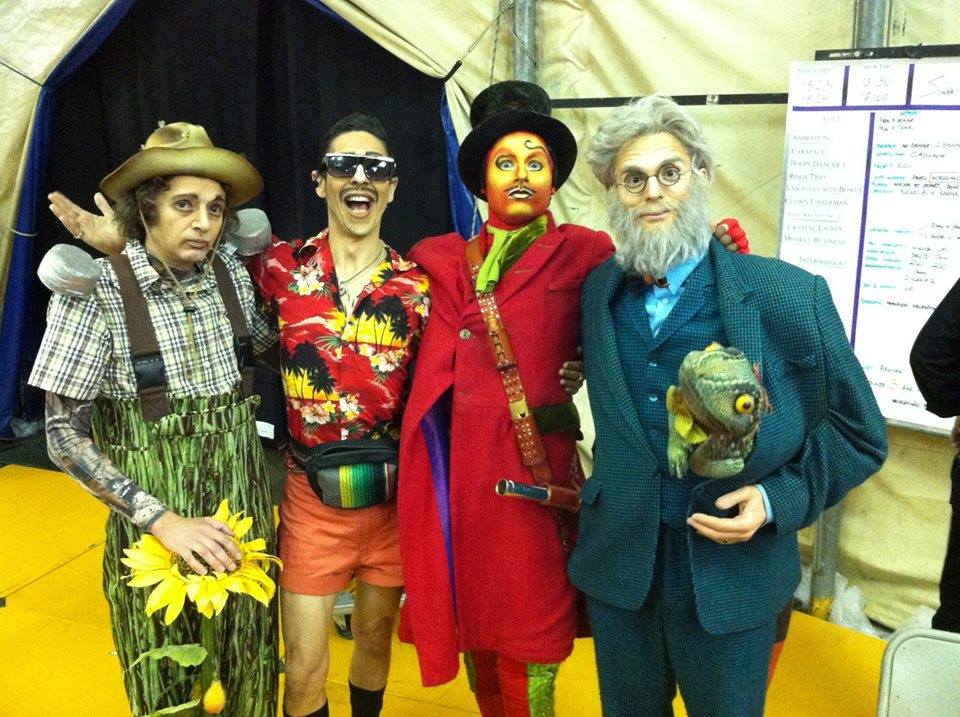
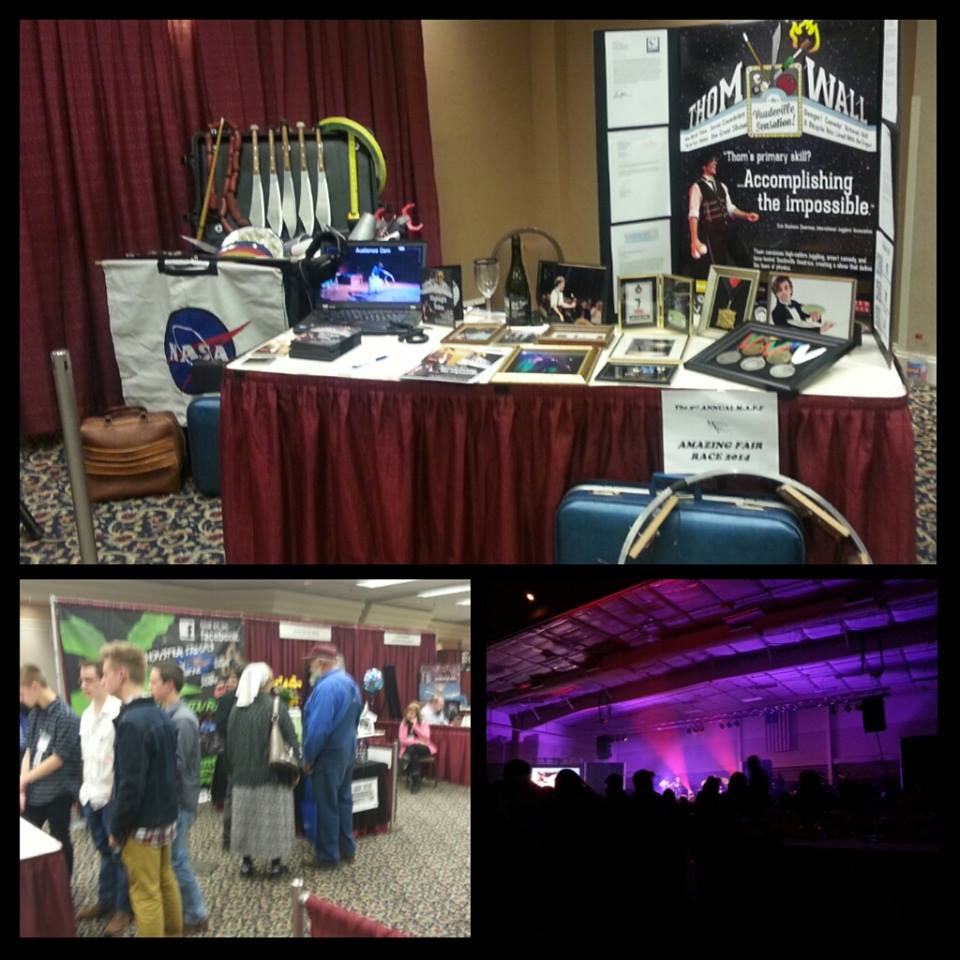
![IMG950601[1]](https://thomwall.com/wp-content/uploads/2014/12/IMG9506011.png)
